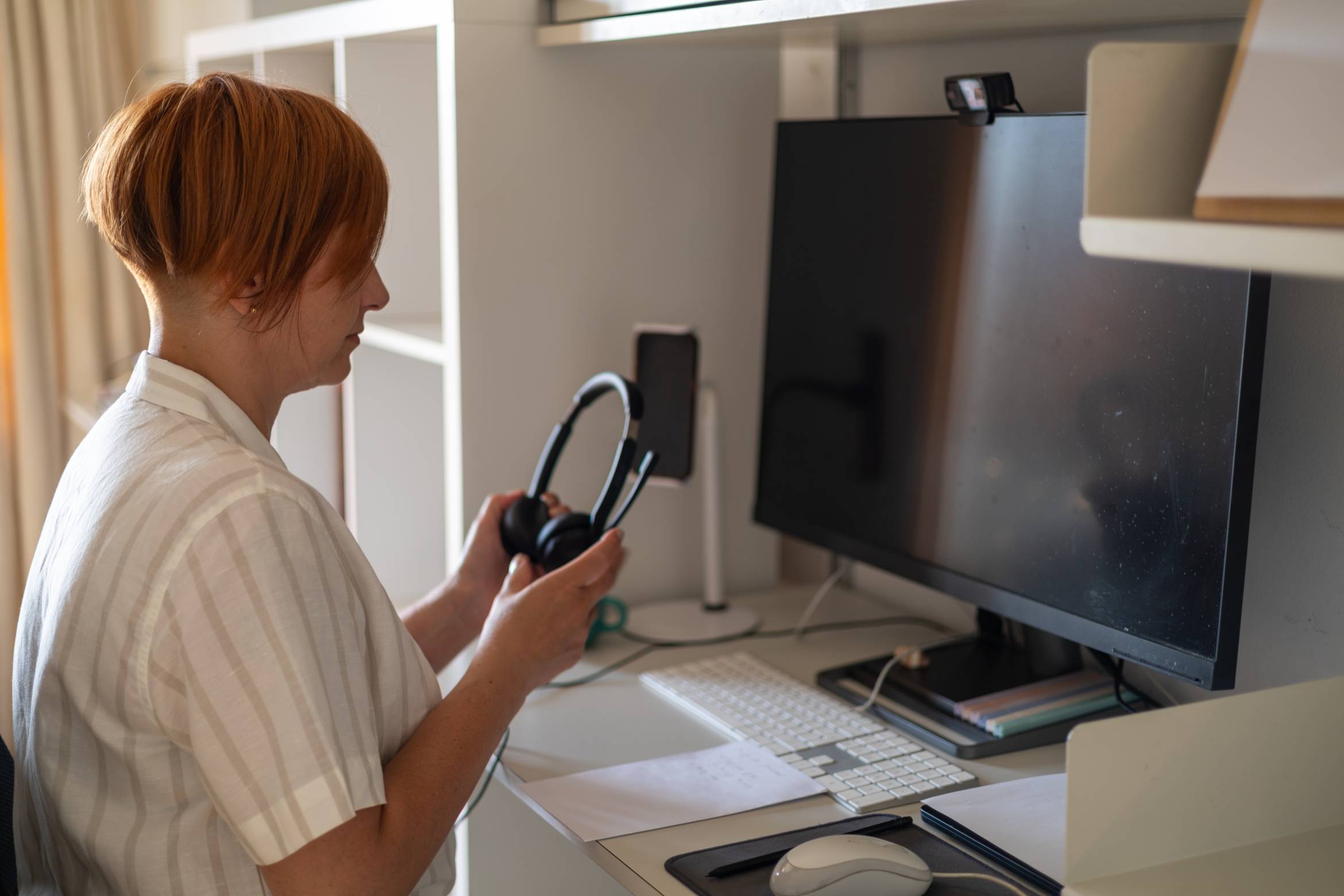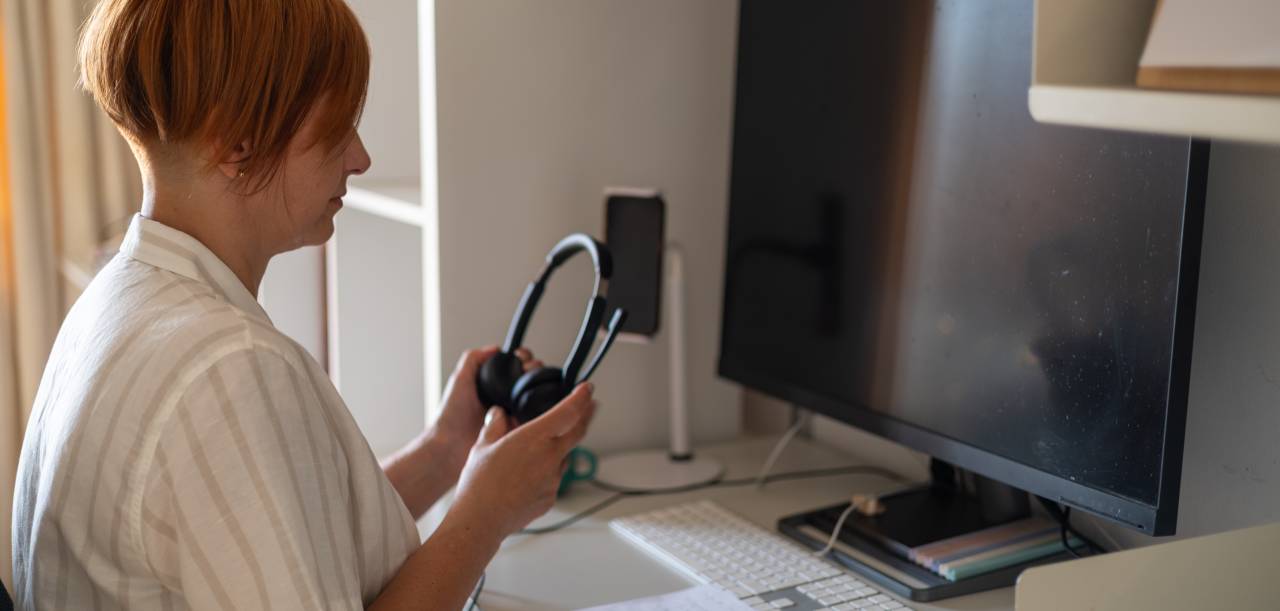
When people think of a conference interpreter, they often imagine us in soundproof booths at the back of a busy conference hall. These days, though, my “booth” is often a well-equipped home office. The work is the same, making sure everyone can understand and be understood, but the setup is a little different.
*RSI = Remote Simultaneous Interpreting. I wrote a blog post about it here.
Here’s what a day in my life as a remote conference interpreter actually looks like.

Morning: Prepping the Ground as a Remote Conference Interpreter
As most of my assignments are based in the Central European Time Zone, I usually start about an hour earlier than I would for in-person events. So, for example, if it’s 9 am in Berlin or Paris and the conference is kicking off, it’s only 8 am at home in London. This clearly favours early risers in the remote conference interpreting community, whereas night owls like myself are left to struggle…
Once I’ve had my coffee, I start preparing. This involves reviewing the agenda, checking glossaries and looking through any last-minute slides or documents that have been sent to me. I want to make sure that I know the topic well and that I can access all the preparation materials instantly when needed.
Since I work alone in my home office, I am also my own technician. Although there is usually a remote technician responsible for the event set-up, at home I am my own IT department.
This involves extra work and responsibility, as an addition to the task of interpreting itself. I need to make sure that my internet is stable, the headset is working, my backup equipment is at hand and the RSI platform is up-to-date and working. When the event goes live, there’s little time for troubleshooting.

Before the Event: Sound Checks, Platforms, and Teamwork
I log into the remote simultaneous interpreting (RSI) platform at least 30 minutes ahead of time. This is when I “meet” my booth partner for the day; we might be working miles apart, but we need to function as one team.
First things first: sound check. Can we hear the speaker clearly? Are our microphones crisp? Is the platform stable? Once the tech is sorted, we set up our handover system. Interpreters usually switch every 20 to 30 minutes, so we agree on how to signal it: sometimes it’s a quick message in the platform chat, sometimes a wave on camera, but most often it’s just a simple WhatsApp ping.
That back-channel also helps when one of us needs backup: a number, a tricky name, or that acronym the speaker just rattled off. It’s like having a co-pilot in the cockpit, even if they’re sitting in another city, we still collaborate and work as a team.

Showtime: The Focus of Remote Simultaneous Interpreting
Once the event starts, it’s showtime. RSI requires laser focus to handle a multitude of tasks simultaneously, including:
- Listening to the source language.
- Analysing the input.
- Conveying the input into the target language.
- Watching the presentation slides on the screen.
- Checking glossaries or reference material if we get stuck for a term.
- Keeping an eye on the chat for any messages from the remote booth partner, other colleagues, the remote event technician, the agency or the client.
- Trouble-shooting in the background…
All at once.
We swap regularly because no human brain can sustain that level of concentration for hours on end. When it’s not my turn, I’m still listening in, ready to step in if my partner needs help with terminology or if there is a technical problem at their end.

The Curveballs Every Interpreter Faces
No two events are the same. Sometimes speakers read at lightning speed. Sometimes microphones are too far away or a presenter decides to skip all their slides and improvise…
That’s where the preparation, and teamwork, really pays off. My partner and I back each other up, feeding missing terms through chat or stepping in if someone’s audio drops, sometimes at a few seconds notice.

Wrapping Up: Why Conference Interpreting Is a Team Effort
When the event ends, I log off, but not before sending my partner and the remote interpreting team a quick thank-you. Interpreting is a team sport, even when the “booth” is virtual.
Behind the scenes, it may look like I’m “just talking into a microphone.” But really, working as a remote conference interpreter is a blend of subject knowledge, technical setup, teamwork, and high-wire concentration: all working together to make sure participants can connect across languages.
Please get in touch if your agency or organisation requires remote conference interpreting. If I’m unable to assist you directly, I will help you find someone who can.



